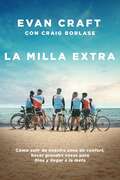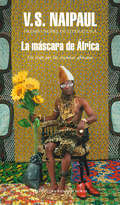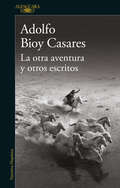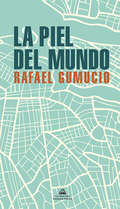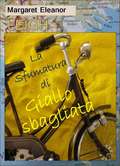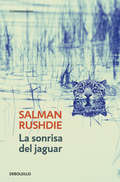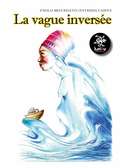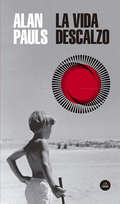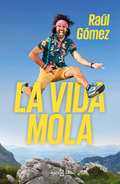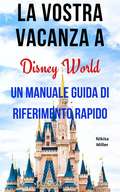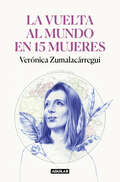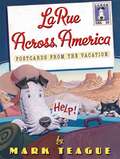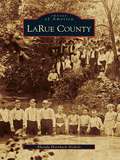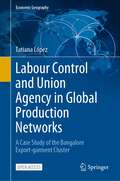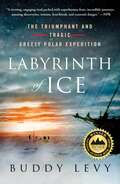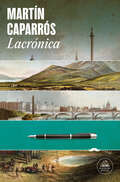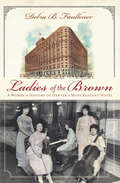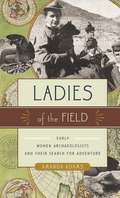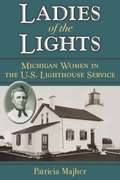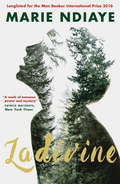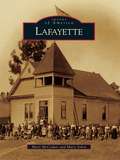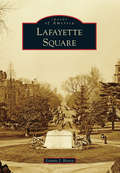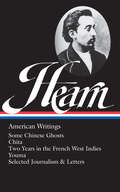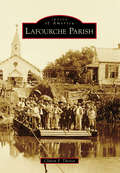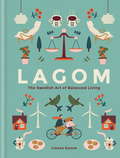- Table View
- List View
La milla extra: Cómo salir de nuestra zona de confort, hacer grandes cosas para Dios y llegar a la meta
by Craig Borlase Evan CraftLa milla extra te invita a un emocionante viaje que fortalecerá tu fe y hará que tu espíritu se sienta vivo. A través de la increíble historia real de Evan, encontrarás una nueva esperanza con la ayuda de Dios, serás testigo de cómo la perseverancia puede cambiar tu vida, y encenderás tu propia búsqueda de un significado y propósito más profundo.La milla extra es una historia real sobre un viaje caritativo en bicicleta a través de Sudamérica que cambió una vida. Evan, un artista de alabanza estadounidense y ciclista principiante, se embarcó en una difícil misión que lo desafiaría más que nunca. Lo hizo con un equipo que incluía a dos ciclistas paralímpicos, ambos con una pierna. El viaje estuvo repleto de percances, planes desordenados y fue mucho más duro de lo que Evan pensaba.Sin embargo, La milla extra es algo más que un paseo en bicicleta y afrontar las pruebas de viajar desde la costa pacífica de Chile hasta la costa atlántica de Argentina. A lo largo de esos mil kilómetros, Evan vio que Dios estaba obrando de manera poderosa. ¡Vidas estaban siendo transformadas frente a sus ojos!Este libro te ayudará a:Embarcarte en un viaje de auto-descubrimiento y significado más profundo.Profundizar tu fe y reavivar tu pasión espiritual.Experimentar la curación del dolor y la restauración de la esperanza.Aprender valiosas lecciones de vida sobre la confianza y la resistencia.Ser testigo del poder transformador de la perseverancia y la presencia de Dios.Inspirarte para tomar más en serio la Gran Comisión.La milla extra es un libro sobre cómo Dios nos sorprende. Se trata de ver las cosas de una manera nueva, encontrar esperanza y permitir que la perseverancia termine su trabajo de perfeccionamiento en nosotros. The Extra MileThe Extra Mile invites you on an exciting journey that will strengthen your faith and make your spirit feel alive! Through Evan's amazing true story, you'll find new hope with God&’s help, witness how perseverance can change your life, and ignite your own search for deeper meaning and purpose.The Extra Mile is a real-life story about a life-changing charity bike ride across South America. Evan, an American worship artist and beginner cyclist, set out on a tough mission that would challenge him more ever before. He did it with a team that included two Paralympic riders, both with one leg. The journey was filled with near-misses, messed-up plans, and was much harder than Evan thought.But The Extra Mile is more than just a bike ride and the trials of traveling from the Pacific coast of Chile to the Atlantic coast of Argentina. Along those thousand miles, Evan saw that God was working in powerful ways. Lives were being transformed right before his eyes!This book will help you to:Embark on a journey of self-discovery and deeper meaning.Deepen your faith and reignite your spiritual passion.Experience the healing of pain and restoration of hope.Learn valuable life lessons about trust and resilience.Witness the transformative power of perseverance and God's presence.Gain inspiration to take the Great Commission more seriously.The Extra Mile is a book about being surprised by God. It's about seeing things in a new way, finding hope again, and allowing perseverance to finish its perfecting work in us.
La máscara de África
by V. S. Naipaul«Para mis libros de viajes viajo alrededor de un tema. Y el tema de La máscara de África son las creencias africanas. Comienzo en Uganda, en el centro del continente, voy a Ghana y a Nigeria, a Costa de Marfil y a Gabón, y acabo en el extremo meridional del continente, en Suráfrica. Mi tema son las creencias, no la vida política o económica, y, sin embargo, en el ese extremo del continente las realidades políticas son tan abrumadoras que no pueden obviarse. Quizá un aspecto tácito de mis indagaciones fuera comprobar si existía la posibilidad de subvertir la vieja África con los métodos del mundo exterior. El tema tuvo validez hasta que llegué al sur, donde el choque entre las dos maneras de pensar y creer se volvió demasiado parcial. Los rascacielos de Johannesburgo no se erigían sobre arena. El mundo más antiguo de la magia daba sensación de fragilidad, pero al mismo tiempo poseía una cualidad de perdurabilidad. Uno podía sentir que sobreviviría a cualquier desastre. Yo esperaba que las prácticas mágicas variaran significativamente en la gran extensión de África. Pero no fue así. En todas partes, los adivinos querían "tirar los huesos" para interpretar el futuro, y la idea de la "energía", a la que se accedía mediante el sacrificio ritual de partes del cuerpo, era una constante. Ser testigo de ello, hacerse una idea de su poder, significaba retroceder hasta los inicios de todo. Llegar a esos inicios era el propósito de mi libro.» V.S. Naipaul
La otra aventura y otros escritos
by Adolfo Bioy CasaresLa otra aventura y otros escritos reúne cinco obras de no ficción que escribió Bioy Casares en diferentes años entre 1968 y 1999. Inaugura este volumen de no ficción La otra aventura (1968), una serie de prólogos y artículos de Bioy entre los que se destacan un análisis en torno a la originalidad de La Celestina y una valiosa nota sobre su amistad con Borges; en Memoria sobre la pampa y los gauchos (1970) Bioy explora las múltiples resonancias de esas palabras que a él le despiertan ansiedad pero «para la mayoría de los argentinos son de uso turístico»; el hilarante y satírico Diccionario del argentino exquisito (1971) incluye verdaderos hallazgos; Unos días en el Brasil (1991), el diario de un viaje realizado en 1960 en el contexto de un congreso del PEN Club, y De las cosas maravillosas (1999), reflexión luminosa que tiene como objetivo ayudar a conocernos mejor.
La piel del mundo
by Rafael GumucioCrónicas personales que muestran ciertas ciudades desde una óptica única, ingeniosa, divertida, intrépida. En La piel del mundo encontramos a Gumucio moviéndose como pez en el agua en uno de los registros que lo ha convertido en una voz inconfundible de la actual literatura latinoamericana: la no ficción personal. Reformulación radical de Páginas coloniales, de 2006, con varias páginas más y sobre todo varias páginas menos La piel del mundo narra las peripecias del autor en ciudades como Barcelona, Madrid, Puerto Príncipe y Nueva York. El cronista aparece acá bajo la forma de un hombre que recorre y observa el mundo y a sus habitantes (y a sí mismo, claro está) desde un ángulo muy singular y los trae al papel con una prosa llena de sagacidad y desparpajo, cuestionando desde el primer momento los lugares comunes maìs asentados: “El turista se equivoca mucho menos que el viajero sobre la naturaleza de los países que visita”. Como epílogo va una crónica desde una desolada Nueva York, donde el autor está radicado desde principios de 2020, poco antes del desate de la pandemia que puso al mundo de cabeza.
La sfumatura di giallo sbagliata
by Federica Bruniera Margaret Eleanor LeighEro una donna di mezz'età, senza tetto e quasi senza soldi, affatto diversa dalla barbona seduta sulla panchina poco distante. Non potevo arrendermi e tornare a casa, perché ormai una casa non ce l'avevo più. La mia casa ora erano la bicicletta e la tenda. Ormai casa era dovunque mi trovassi alla fine della giornata. Ciò significava che, per quella sera, sarebbe stata la stazione di Genova Piazza Principe. Ero in giro per l'Europa in bicicletta alla ricerca di Utopia, un posto che credevo si trovasse da qualche parte in Grecia. Una volta trovata, mi sarei rifatta una vita lì. Era la mia grossa, grassa crisi di mezz'età greca. Che diavolo mi era saltato in mente?
La sonrisa del jaguar (Linea Abierta Alfagu Ser.)
by Salman RushdieHistoria del viaje que el autor, Salman Rushdie, realizó en 1986 a un país en revolución, Nicaragua. Rushdie viajó a Nicaragua en 1986, en plena revolución sandinista, sin ideas preconcebidas de lo que se iba a encontrar. Lo que descubrió le impresionó sobremanera: una cultura de héroes convertidos en objetos inanimados, y de políticos y guerrilleros que eran poetas; una tierra difícil, llena de hermosas contradicciones. Con su mirada, sobre la que siempre pesa su especial sensibilidad, Rushdie nos descubre una tierra en la que resuena continuamente el estruendo del choque entre historia y moral, entre el gobierno y los individuos. Un preciso y obsesivo retrato de la gente, la política, la tierra y la literatura de un país sumergido en la revolución.
La vague inversée
by Patrizia CaiffaC’est l’époque de la crise économique et de l’emploi en Italie. Valeria, une jeune méridionale, aspirante journaliste insatisfaite et Pino, camionneur lombard qui vient de perdre son emploi, et a sa femme et ses enfants à charge, décident de donner un tournant à leur difficile existence au moyen d’un geste impensable: tenter le “voyage de l’espoir” des migrants en Méditerranée en sens inverse. De Lampedusa en Tunisie. Dans le bateau, une quinzaine d’Italiens se retrouvent ensemble, de tous les ȃges et les milieux sociaux, de différentes régions, qui racontent leurs vie set les problèmes qui les ont poussés à partir. Ce sont les premiers Italiens qui voyagent en sens inverse. Essayant justement de chevaucher la vague inversée.
La vida descalzo (In Situ: Playas Ser.)
by Alan PaulsAlan Pauls entremezcla recuerdos, fotografías y reflexiones para escribir un verdadero manifiesto sobre la playa. Mezcla de autobiografía, ensayo cultural y documento imaginario, La vida descalzo es un homenaje al lugar común donde seguimos siendo felices sin miedo. Mar, arena, sol y la euforia de estar legalmente semidesnudos: la playa sigue vendiendo virtudes de paraíso natural, pero esa utopía salvaje es también el objeto eminentemente cultural, preñado de sentidos y valores sociales, que moldean la literatura, el cine y la comunicación de masas. Con un pie en la memoria personal y otro en el análisis cultural, Alan Pauls revisa las caras múltiples de un espacio clave de la vida moderna: la playa como experiencia íntima y como estereotipo, simulacro de vida primitiva y conquista de la civilización, limbo personal y espectáculo multitudinario, teatro de erotismos privados y escenario público hot que carga de intensidad nuestros veranos de todos los años. «No sé por qué, buscando qué mito de origen, va a la montaña la gente que acostumbra ir a la montaña. Sé que los que vamos a la playa -a Villa Gesell como a Cabo Polonio, a Punta del Este como a Mar del Plata, a Florianópolis como a Mar del Sur, a Cozumel como a Goa- vamos siempre más o menos tras lo mismo: las huellas de lo que era el mundo antes de que la mano del hombre decidiera reescribirlo. La playa reúne en su fisonomía de tabula rasa los valores de una era primitiva, previa a la historia, y todos los rasgos de un escenario póstumo, que una catástrofe natural o el zarpazo de una fuerza aniquiladora habrían reducido a lo más elemental: un paisaje de restos y escombros microscópicos. La playa es a la vez lo que estuvo antes y lo que vino después, el principio y el fin, lo todavía intacto y lo ya arrasado, la promesa y la nostalgia.»Alan Pauls
La vida mola
by Raúl Gómez«La vida mola es, sin querer, un manual para ser un poco más feliz.»Dani Rovira La vida mola es el grito de guerra de Raúl Gómez, viajero, aventurero, y runner. Recorre el mundo a golpe de zapatilla en busca de historias inspiradoras de personas excepcionales con las que comparte carreras únicas en Maraton Man, el programa de Movistar+. Su objetivo nunca es llegar el primero sino disfrutar de la emoción del camino. Este libro es un canto a la vida, una colección de momentos emocionantes en lugares más remotos del planeta. «Como en una maratón, la vida está llena de momentos maravillosos, inolvidables, felices, pero también de otros en los que sufrimos, lloramos y nos topamos con nuestro propio muro, que aparece sin avisar y para el que no existe entrenamiento previo. Este libro habla de mi historia, de todas las historias que me he encontrado en esta aventura; hablo de personas valientes, solidarias, optimistas, luchadoras; hablo de desigualdades, de injusticias, de otras realidades, de superhéroes sin capa que nunca tiran la toalla y trabajan duro por cumplir sueños. También hablo de amor, de buscar aquello que nos hace felices y del poder de la risa, que es terapéutica. En mi aventura he descubierto millones de motivos para correr y sobretodo, motivos para vivir porque la vida, mola.»Raúl Gómez Reseñas:«Raúl rebosa endorfinas y tiene una disposición genética a la bondad. Es uno de los hombres más luminosos que conozco. La televisión lo sabe y los que lo conocen también.»Andreu Buenafuente «Formamos parte de una sociedad muy exigente donde a veces se nos olvida cómo vivir. Y la clave está en estar dispuesto a ser feliz, como refleja este maravilloso libro lleno de emociones.»Jesús Calleja «Hay muy pocas personas que te alegren, así, nada más verlas. Ese es el Gran Raúl. Leyendo este libro casi me han dado ganas de salir a correr.»Florentino Fernández «Uno puede pensar que su vida mola, pero creedme, mola mucho más cuando la compartes con amigos como Raúl. En estas páginas descubrirás quién es la persona que esconde este fantástico loco.»Roberto Leal
La vostra vacanza a Disney World: Un manuale guida di riferimento rapido
by NIkita MillerManuale guida per un viaggio a Disney World - Questo libro non si ritiene una guida integrale su Disney World. Sono disponibili molte guide altamente dettagliate e massicce che soddisfano questo scopo, ma nell’utilizzarle trovai che sono talmente dettagliate che devo leggere molto per trovare quello che stavo semplicemente cercando. Ho scritto questo libro per le persone che necessitano una panoramica utile e veloce sui quattro principali parchi a tema (Magic Kingdom, Epcot, Animal Kingdom, e Disney Studios), dove si può mangiare, dove si può stare, in modo da formare una conoscenza operativa senza spendere delle ore nella lettura. Le grandi guide sono più utili a riempire dei spazi vuoti.
La vuelta al mundo en 15 mujeres: Historias de mujeres que me han cambiado la mirada
by Verónica ZumalacárreguiLa periodista y presentadora de televisión Verónica Zumalacárregui nos presenta en este libro-reportaje quince historias de mujeres que, como ella misma dice, le han cambiado la mirada y aportan distintas opiniones y perspectivas de temas y retos sociales a los que nos enfrentamos. Un poliédrico y rico retrato de nuestros desafíos y nuestros logros. HISTORIAS DE MUJERES QUE ME HAN CAMBIADO LA MIRADA «En mis viajes a lo largo y ancho del planeta he conocido a mujeres con valores, culturas y vidas muy distintas a la mía. En lugar de convertir nuestras diferencias en una barrera, he querido ponerme en su piel para intentar ver el mundo desde sus ojos. Me han hecho cuestionarme mis ideas, para cambiarlas, reafirmarlas o, simplemente, enriquecerlas. Pero, sobre todo, me han ayudado a liberarme de prejuicios, demostrándome que no hay una sola fórmula para ser feliz, sino muchas y muy diversas, y que aquellas que podemos elegir la nuestra somos realmente afortunadas».
LaRue Across America: Postcards from the Vacation
by Mark TeagueBestselling, award-winning author/illustrator Mark Teague makes readers laugh aloud when LaRue goes on vacation with Mrs. Hibbins's cats! Ike's plans for a peaceful cruise with Mrs. LaRue are thwarted when their neighbor, Mrs. Hibbins, falls suddenly ill from heat stroke. Mrs. LaRue suggests that she and Ike care for her cats while Mrs. Hibbins is in the hospital, inviting them along on the cruise. But cats aren't allowed, and Mrs. LaRue decides to take them all on a week's vacation of road-tripping. Ike begs and begs for bus fare in his letters to Mrs. Hibbins, but why does she not respond? Image descriptions present.
LaRue County (Images of America)
by Rhonda Hornback NicholsIn 1843, LaRue County was named after John LaRue, an early settler in the area. Hodgenville, the county's largest town, was established in 1818 and later became the seat in 1843. LaRue County is best known as the birthplace and childhood home of Abraham Lincoln; he was born on February 12, 1809, at the Sinking Spring Farm. In 1909, in honor of Lincoln's centennial birthday, New York sculptor Adolph A. Weinmann created a life-size statue of the 16th president, which still stands in the Hodgenville square. Today the Abraham Lincoln Birthplace National Historic Site and Abraham Lincoln Boyhood Home at Knob Creek are popular tourist attractions. From a national icon to the local farmer, generations of people have called LaRue County home and have nurtured a strong sense of community.
Labour Control and Union Agency in Global Production Networks: A Case Study of the Bangalore Export-garment Cluster (Economic Geography)
by Tatiana LópezThis book puts Indian garment workers and their organisations at the centre of the analysis. Taking the Bangalore export-garment cluster as a case study, the book explores the conditions that enable but also constrain the capacities of garment workers’ unions to build collective power vis-à-vis employers and thereby improve their conditions. Drawing on theoretical concepts from labour geography, relational economic geography, and Global Production Network (GPN) analysis, the book highlights, on the one hand, how the complex labour control regime in the Bangalore export-garment cluster poses manifold challenges and constraints for workers’ and unions’ collective agency. On the other hand, the book illustrates the various networked agency strategies that local garment unions in Bangalore have developed over the years to overcome these constraints by tapping into coalitional power resources from worker, consumer and labour rights organisations in the Global North.This book is therefore highly relevant for economic geographers and other scholars interested in dynamics of labour and development in GPNs as well as for unionists and labour rights activists committed to improving working conditions in the global garment industry.This is an open access book.
Labyrinth of Ice: The Triumphant and Tragic Greely Polar Expedition
by Buddy LevyNational Outdoor Book Awards WinnerWinner of the BANFF Adventure Travel Award“A thrilling and harrowing story. If it’s a cliche to say I couldn’t put this book down, well, too bad: I couldn’t put this book down.” —Jess Walter, bestselling author of Beautiful Ruins“Polar exploration is utter madness. It is the insistence of life where life shouldn’t exist. And so, Labyrinth of Ice shows you exactly what happens when the unstoppable meets the unmovable. Buddy Levy outdoes himself here. The details and story are magnificent.” —Brad Meltzer, bestselling author of The First Conspiracy: The Secret Plot to Kill George Washington Based on the author's exhaustive research, the incredible true story of the Greely Expedition, one of the most harrowing adventures in the annals of polar exploration. In July 1881, Lt. A.W. Greely and his crew of 24 scientists and explorers were bound for the last region unmarked on global maps. Their goal: Farthest North. What would follow was one of the most extraordinary and terrible voyages ever made. Greely and his men confronted every possible challenge—vicious wolves, sub-zero temperatures, and months of total darkness—as they set about exploring one of the most remote, unrelenting environments on the planet. In May 1882, they broke the 300-year-old record, and returned to camp to eagerly await the resupply ship scheduled to return at the end of the year. Only nothing came. 250 miles south, a wall of ice prevented any rescue from reaching them. Provisions thinned and a second winter descended. Back home, Greely’s wife worked tirelessly against government resistance to rally a rescue mission.Months passed, and Greely made a drastic choice: he and his men loaded the remaining provisions and tools onto their five small boats, and pushed off into the treacherous waters. After just two weeks, dangerous floes surrounded them. Now new dangers awaited: insanity, threats of mutiny, and cannibalism. As food dwindled and the men weakened, Greely's expedition clung desperately to life.Labyrinth of Ice tells the true story of the heroic lives and deaths of these voyagers hell-bent on fame and fortune—at any cost—and how their journey changed the world.
Lacrónica
by Martín Caparrós*Premio Ortega y Gasset de Periodismo a la Trayectoria profesional 2023* 40 años de periodismo narrativo condensados en una obra magistral; Lacrónica reafirma a Caparrós como una de las voces imprescindibles de la literatura en nuestro idioma. «Martín Caparrós representa la fuerza del periodismo que se hace en español.» Pepa Bueno, directora de El País Lacrónica sería un «grandes éxitos» de Caparrós, una compilación de sus mejores crónicas, si no fuera porque allí, además, el autor cuenta su historia en el periodismo y reflexiona sobre cómo escribe lo que escribe, cómo piensa lo que piensa, cómo se hace lo que hace. Entre recuerdos de su primer jefe, Rodolfo Walsh, y de su último maestro, Tomás Eloy Martínez, Caparrós da una lección de escritura de la no ficción que las facultades de periodismo de España y América Latina ahora emplean para enseñar esta materia. Todo lo que usted siempre -o nunca- quiso saber sobre Lacrónica, ese extraño género del periodismo que empezó a poner por escrito el continente americano y tiene el don de permitirse la duda, brilla en esta obra que, casi sin querer, se volvió ineludible. La crítica ha dicho: «El mejor cronista actual de América Latina: un soberbio entrevistador, un viajero dotado de cultura enciclopédica y de una fina ironía.» Roberto Herrscher, La Vanguardia «Este libro reúne una sorprendente muestra de la práctica de la crónica, articulado a modo de crónica del cronista, ya que no es solo un compendio de piezas selectas, sino un recorrido por la responsabilidad de la propia mirada y la adicción a la escritura».Francisco Solano, Babelia, El País «Lacrónica es uno de los libros con los que más he disfrutado de los últimos tiempos. Martín Caparrós habla con una lucidez asombrosa, y esos pasajes que le dan coherencia y vertebración al volumen resultan definitivos para saber en qué consiste escribir crónica y qué papel ha jugado esa disciplina en la literatura en castellano».Nadal Suau, El Español Sobre Ñamérica: «El conjunto es el resultado de un esfuerzo superheroico por contar y pensar de nuevo —y con nuevas ideas— medio continente.»Jorge Carrión, La Vanguardia «El autor argentino despliega en Ñamérica el retrato coral de un continente marcado por los tópicos literarios, el maniqueísmo histórico y la desigualdad económica.»Andrea Aguilar, Babelia, El País«Martín Caparrós lo ha vuelto a hacer. En Ñamérica entrecruza crónica periodística, ensayo, poesía... Y sale lo que se parece mucho a un hito literario sobre América Latina y sus circunstancias.»Edu Galán, Zenda «Un ensayo abrumador y fascinante que persigue glosar un continente y a sus 420 millones de habitantes.»Daniel Arjona, El Confidencial
Ladies of the Brown: A Women's History of Denver's Most Elegant Hotel (Landmarks)
by Debra B. Faulkner&“Amusing and little-known anecdotes&” about the hotel&’s female guests including Hillary Rodham Clinton, Zsa Zsa Gabor, Joan Baez, Helen Keller, and others (The Denver Post). Since the day it opened in 1892, Denver&’s Brown Palace Hotel has been the Mile High City&’s foremost destination for high-powered business travelers, celebrities, royalty and politicians. In Ladies of the Brown, hotel historian and archivist Debra B. Faulkner introduces readers to some of the hotel&’s most fascinating and famous female visitors, residents and employees. From Denver&’s &“Unsinkable&” Molly Brown and Romania&’s Queen Marie to Zsa Zsa Gabor, Mamie Eisenhower and many, many more, these intriguing characters play leading roles in true tales of romance, scandal, humor and heartbreak. This collection of stories is integral to the history of the Brown Palace and Denver, offering a glimpse into the lives of generations of women from all walks of life. &“Crafted by Brown Palace historian and archivist Debra Faulkner, this well written, well-researched and thoroughly entertaining book presents amazing stories one can hardly believe are true.&” —Colorado Country Life, &“The Year&’s Best Books&” &“What fun we had learning about this amazing assortment of characters, all real, and this building so well-appointed and enduring.&” —Mountain States Collector
Ladies of the Field: Early Women Archaeologists and Their Search for Adventure
by Amanda AdamsThe first women archaeologists were Victorian era adventurers who felt most at home when farthest from it. Canvas tents were their domains, hot Middle Eastern deserts their gardens of inquiry and labor. <P><P>Thanks to them, prevailing ideas about feminine nature - soft, nurturing, submissive - were upended. Ladies of the Field tells the story of seven remarkable women, each a pioneering archaeologist, each headstrong, smart, and courageous, who burst into what was then a very young science. Amanda Adams takes us with them as they hack away at underbrush under a blazing sun, battle swarms of biting bugs, travel on camelback for weeks on end, and feel the excitement of unearthing history at an archaeological site. Adams also reveals the dreams of these extraordinary women, their love of the field, their passion for holding the past in their hands, their fascination with human origins, and their utter disregard for convention.
Ladies of the Lights: Michigan Women in the U.S. Lighthouse Service
by Patricia Majher"A great read about some great ladies, Pat Majher'sLadies of the Lightspays long overdue homage to an overlooked part of Great Lakes maritime history in which a select group of stalwart women beat the odds to succeed in a field historically reserved for men. " ---Terry Pepper, Executive Director of Great Lakes Lighthouse Keeper's Association Michigan once led the country in the number of lighthouses, and they're still a central part of the mystique and colorful countryside of the state. What even the region's lighthouse enthusiasts might not know is the rich history of female lighthouse keepers in the area. Fifty women served the sailing communities on Lakes Huron, Michigan, and Superior, as well as on the Detroit River, for more than 100 years. From Catherine Shook, who raised eight children while maintaining the Pointe Aux Barques light at the entrance to Saginaw Bay; to Eliza Truckey, who assumed responsibility for the lighthouse in Marquette while her husband fought for four years in the Civil War; to Elizabeth Whitney, whose combined service on Beaver Island and in Harbor Springs totaled forty-one years---the stories of Michigan's "ladies of the light" are inspiring. This is no technical tome documenting the minutiae of Michigan's lighthouse specifications. Rather, it's a detailed, human portrait of the women who kept those lighthouses running, defying the gender expectations of their time. Patricia Majher is Editor ofMichigan Historymagazine, published by the Historical Society of Michigan. Prior, she was Assistant Director of the Michigan Women's Historical Center and Hall of Fame in Lansing, Michigan. In addition, she has been writing both advertising and editorial copy for almost thirty years and has been a frequent contributor to Michigan newspapers and magazines.
Ladivine
by Marie NDiayeLonglisted for the Man Booker International Prize 2016Clarisse Rivière's life is shaped by a refusal to admit to her husband Richard and to her daughter Ladivine that her mother is a poor black housekeeper. Instead, weighed down by guilt, she pretends to be an orphan, visiting her mother in secret and telling no-one of her real identity as Malinka, daughter of Ladivine Sylla. In time, her lies turn against her. Richard leaves Clarisse, frustrated by the unbridgeable, indecipherable gulf between them. Clarisse is devastated, but finds solace in a new man, Freddy Moliger, who is let into the secret about her mother, and is even introduced to her. But Ladivine, her daughter, who is now married herself, cannot shake a bad feeling about her mother's new lover, convinced that he can bring only chaos and pain into her life. When she is proved right, in the most tragic circumstances, the only comfort the family can turn to requires a leap of faith beyond any they could have imagined.Centred around three generations of women, whose seemingly cursed lineage is defined by the weight of origins, the pain of alienation and the legacy of shame, Ladivine is a beguiling story of secrets, lies, guilt and forgiveness by one of Europe's most unique literary voices.Translated from the French by Jordan Stump
Lafayette
by Mary Mccosker Mary SolonToday's Lafayette is a modern East Bay suburb with a long and intriguing history of people, agriculture, and commerce. The story began in the summer of 1846, when Elam Brown and 13 families left St. Joseph, Missouri, in wagon trains and embarked on a sixmonth journey west to establish new homes and lives. By February 1848, Brown and his family had purchased the Rancho Acalanes in Contra Costa County from a San Francisco financier and had established the settlement that would later became Lafayette. Gradually Brown sold his land to other settlers, and the community began to grow. Eventually homes, stores, roads, schools, and churches were built. In these pages, the genesis of Lafayette, along with the story of its creators and early residents, is revealed in stirring early imagery.
Lafayette Square
by Lonnie J. HoveyLafayette Square's rich history dates back to the founding of the District of Columbia when Pierre L'Enfant planned it as part of the grounds for the president's house. The square was one of the first open spaces within the city to be designed as a public park. Across Pennsylvania Avenue from the White House, the park's neighborhood became home to presidents, vice presidents, cabinet members, diplomats, inventors, journalists, heroes, authors, scientists, law breakers, and scoundrels. Today, the square and its sculptures are surrounded by government offices, but symbolically, it is the White House's front yard, making it an attractive destination. Using historic photographs, Lafayette Square captures the square's social, political, and architectural history, highlighting important past events.
Lafcadio Hearn: Some Chinese Ghosts / Chita / Two Years in the French West Indies / Youma / selected journalism and letters (The Library of America #190)
by Lafcadio Hearn Christopher BenfeyA translator of Flaubert and Gautier, Lafcadio Hearn was the master of a gaudy and sometimes self-consciously decadent literary style, but he was also a tough-minded and keenly observant reporter, with an eye for the offbeat, the sensual, and occasionally the gruesome. The writings of his American years collected in this Library of America volume—on subjects as wide ranging as comparative folklore, the history of musical instruments, French literary avant-gardes, and New Orleans voodoo—reveal an omnivorous curiosity and an always eclectic sensibility.Some Chinese Ghosts (1887), a stylized retelling of ancient legends, foreshadows Hearn's later fascination with Asian themes. The exquisitely crafted novels Chita (1889), about the devastation wrought by a Louisiana hurricane, and Youma (1890), about a slave rebellion in Martinique, epitomize his writing at its most luxuriantly romantic, alert to the interactions of diverse cultures and suffused with imagistic splendor. His extraordinary travel book Two Years in the French West Indies (1890), presented here with the many illustrations from its first edition, provides a richly impressionistic account of his long stay on Martinique and other Caribbean islands.More than two dozen examples of Hearn's journalism from the 1870s and 1880s are also included here, evoking vanished worlds with incomparable vividness: a raucous African-American nightclub on the Cincinnati waterfront; an execution; scenes of Mardi Gras and the New Orleans French Quarter; an uncharted village of Filipino fishermen in a remote Louisiana bayou. The volume is rounded out with a revealing selection of Hearn's impassioned letters, many published here for the first time in unexpurgated form.LIBRARY OF AMERICA is an independent nonprofit cultural organization founded in 1979 to preserve our nation’s literary heritage by publishing, and keeping permanently in print, America’s best and most significant writing. The Library of America series includes more than 300 volumes to date, authoritative editions that average 1,000 pages in length, feature cloth covers, sewn bindings, and ribbon markers, and are printed on premium acid-free paper that will last for centuries.
Lafourche Parish (Images of America)
by Clifton TheriotLafourche is a parish rich in history and culture known for its close-knit, family-centered communities. The towns and communities of Lafourche were settled along its namesake, Bayou Lafourche, which bisects the parish from its northern boundary to its southern boundary at the Gulf of Mexico. Because of the continuous pattern of homes and businesses built along the bayou, many refer to the bayou as the "Longest Street in the World." The parish was originally inhabited by Native American tribes and later by European, African, and English settlers. Many of the residents of Lafourche can trace their ancestry back to these early settlers, strengthening the sense of community that is distinctive to southern Louisiana. The fertile bayou delta fostered small vegetable farms as well as large sugarcane plantations that continue to thrive. The numerous waterways and marshes of the parish produce bountiful catches of fish, seafood, and other wildlife, giving rise to its reputation as a sportsmen's paradise. The parish's economy is also made up of a shipbuilding industry and the onshore and offshore oil industry.
Lagom: The Swedish Art Of Balanced Living
by Linnea DunneStep aside Hygge. Lagom is the new Scandi lifestyle trend taking the world by storm. This delightfully illustrated book gives you the lowdown on this transformative approach to life and examines how the lagom ethos has helped boost Sweden to the No.10 ranking in 2017's World Happiness Report.Lagom (pronounced 'lah-gom') has no equivalent in the English language but is loosely translated as 'not too little, not too much, just right'. It is widely believed that the word comes from the Viking term 'laget om', for when a mug of mead was passed around a circle and there was just enough for everyone to get a sip. But while the anecdote may hit the nail on the head, the true etymology of the word points to an old form of the word 'lag', which means 'law'.Far from restrictive, lagom is a liberating concept, praising the idea that anything more than 'just enough' is a waste of time. Crucially it also comes with a selflessness and core belief of responsibility and common good. By living lagom you can live a happier and more balanced life, reduce your environmental impact, improve your work-life balance, free your home from clutter, enjoy good food the Swedish way, grow your own and learn to forage, and cherish the relationships with those you love.
